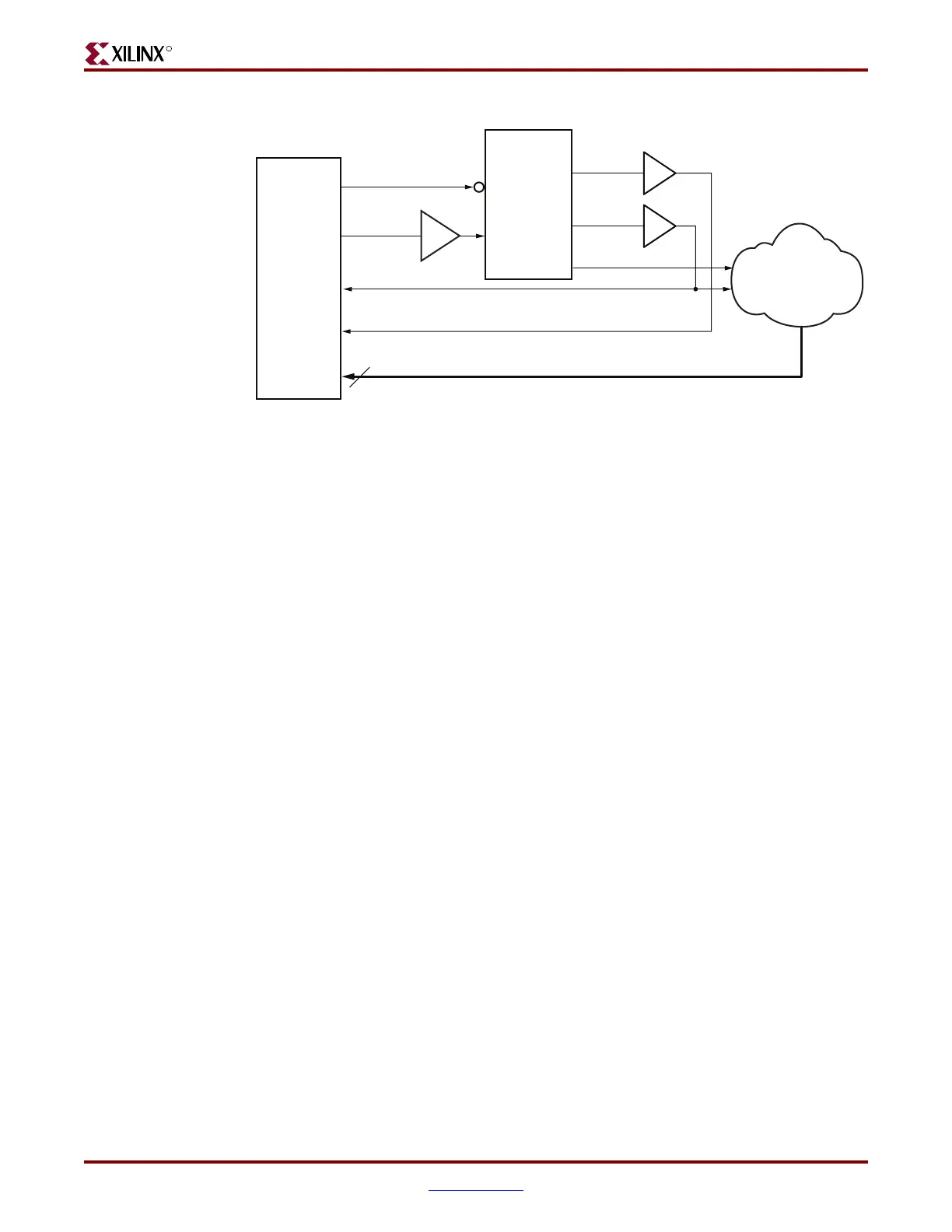

Do you have a question about the Xilinx Virtex-5 RocketIO GTP and is the answer not in the manual?
| Brand | Xilinx |
|---|---|
| Model | Virtex-5 RocketIO GTP |
| Category | Transceiver |
| Language | English |
Introduces the Virtex-5 RocketIO GTP transceiver and its features.
Details on using the RocketIO GTP Transceiver Wizard for wrapper generation.
Covers prerequisites and environment setup for simulating GTP transceiver designs.
Details simulation-only ports and attributes for the GTP_DUAL tile.
Explains attributes controlling SmartModel behavior for simulation accuracy.
Provides information on mapping GTP_DUAL tiles to device resources and package combinations.
Explains GTP_DUAL tile positioning and UCF creation methods.
Illustrates GTP_DUAL placement for various packages and nomenclature.
Overview of shared GTP functions for power, clocking, resets, and reconfiguration.
Describes the shared PMA PLL used for generating high-speed serial clocks.
Explains methods for driving the CLKIN port for GTP transceivers.
Details the three ways to reset a GTP_DUAL tile and its subcomponents.
Discusses power control modes for generic and protocol-specific power management.
Explains the DRP interface for dynamic parameter changes of the GTP_DUAL tile.
Overview of the GTP transmitter, including PCS and PMA blocks.
Describes the interface for transmitting parallel data to the GTP transceiver.
Details the 8B/10B encoder for outgoing data, its benefits, and costs.
Explains TX buffer, phase alignment, and bypass options to resolve clock domain differences.
Overview of the GTP receiver, including PCS and PMA blocks.
Details circuits for optimizing termination and compensating for high-frequency losses.
Describes the CDR circuit's function in recovering the clock from incoming serial data.
Details the alignment block for aligning specific commas to byte boundaries.
Shows the basic port interface and operation of the CRC block.
Explains how CRC is used as an error-checking mechanism for data frames.
Describes the CRC32 and CRC64 primitives used for CRC calculation.
Explains loopback modes and their categories: near-end and far-end.
Defines the ports and attributes for configuring loopback modes.
Details Near-End PMA loopback mode using the Near-End source for data generation.
Discusses power supply and clocking design guidelines for overall system performance.
Focuses on selecting the reference clock source or oscillator based on characteristics.
Provides guidelines for SelectIO usage to minimize impact on GTP transceiver performance.
Defines a physical link between transceivers as a channel.
Discusses PCB materials and trace design for optimal performance.
Discusses power supply designs for transceivers to achieve low link error rates.
Discusses signal energy loss due to dielectric characteristics.
Provides guidance on selecting substrate materials for performance and cost.
Provides guidelines for routing high-speed differential traces.
Discusses excess capacitance and inductance in differential transitions.
Explains TDR techniques for identifying transition issues.
Explains the common transition type for differential signals using GSSG vias.
Provides a quick reference to guidelines and strategies for high-speed serial channels.
Illustrates routing transceiver signal pairs along BGA edges.
Describes differences migrating from Virtex-II Pro/Virtex-4 MGTs to Virtex-5 GTP transceivers.
Provides support for Out-of-Band (OOB) signaling for SATA and beaconing.
Lists valid Data characters and K characters for 8B/10B encoding.
Lists attributes and their mappings to DRP addresses and bit locations.
Illustrates the latency of functional blocks within the Transmit and Receive sections.